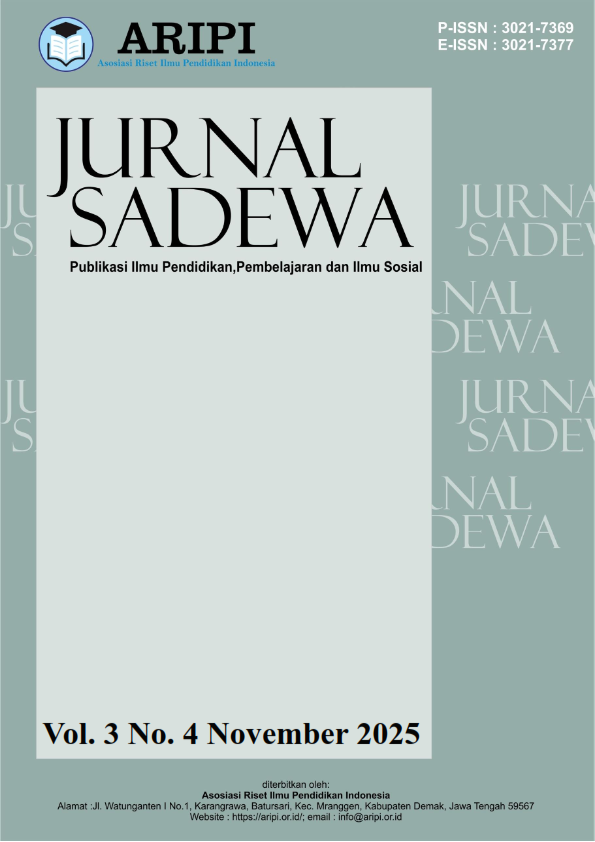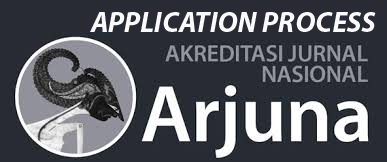Transformasi Budidaya Salak Pondoh Menuju Agrowisata Berkelanjutan
Studi Historis Dinamika Ekonomi dan Sosial Desa Wisata Garongan
DOI:
https://doi.org/10.61132/sadewa.v3i4.2434Keywords:
Agrotourism, Economy, Garongan Tourism Village, Salak Cultivation, Salak PondohAbstract
This study aims to analyse changes in the function of salak pondoh cultivation, specifically in the village of Garongan, which was originally only an agricultural commodity but has now become the foundation of sustainable agrotourism, while also examining the role and empowerment of local communities in addressing economic challenges and conservation. Historically, there was a surge in market prices in the 1990s, which caused unstable price fluctuations. The methods used included qualitative methods such as in-depth interviews, field observations, and literature reviews, with primary sources obtained from interviews with a salak farmer named Pak Pariyoto and Village chief. The results of the study show that the transformation of salak pondoh farming into an educational tourist destination has expanded the resource sector beyond economics to include social and tourism sectors. The conservation of salak plantations depends on the integration of cultural practices such as oral traditions that require the active involvement of the community. The collaboration between farmers and the tourism industry has created better marketing opportunities and enriched the cultural heritage and welfare of the village community. Overall, the results of this research confirm that the enthusiasm and creativity of local farmers have transformed market challenges into sustainable opportunities, making salak the foundation of the economy and tourism identity of Garongan Village.
Downloads
References
Aggraini, R., Suratiyah, K., & Darwanto, D. H. (2024). Persepsi konsumen terhadap agrowisata Salak Pondoh di Kecamatan Turi, Kabupaten Sleman. Agro Ekonomi, 78(2). Retrieved from https://jurnal.ugm.ac.id/jae/article/view/17864
Aru, T. S., Sehabudin, U., & Raswatie, F. D. (2024). Analisis kelayakan usahatani Salak Pondoh Desa Slatri Kecamatan Karangkobar Kabupaten Banjarnegara (Studi kasus: Kelompok Tani Makmur) [Undergraduate thesis, Institut Pertanian Bogor]. IPB Repository. Retrieved from https://repository.ipb.ac.id/handle/123456789/160154
Cahyai, S. (2022, Februari 10). Ketika salak pondoh tak lagi istimewa. Mojok: Suara Orang Biasa. Retrieved from https://mojok.co/liputan/ketika-salak-pondoh-tak-lagi-istimewa/
Februandari, N. N. (2019). Perilaku pariwisata berkelanjutan terhadap pengembangan agrowisata salak pondoh Sleman. Jurnal Nusantara (Jurnal Ilmiah Pariwisata dan Perhotelan), 4.
Haryanto, T. (2014). Identifikasi dan penataan kawasan agrowisata Salak Pondoh Bangunkerto Kecamatan Turi Sleman [Undergraduate thesis, Universitas Muhammadiyah Yogyakarta]. Universitas Muhammadiyah Yogyakarta Repository. Retrieved from https://repository.umy.ac.id/handle/123456789/8133
Media Center Sembada. (2015, Januari 19). Salak pondoh Sleman siap ekspor ke Eropa. Retrieved from https://mediacenter.slemankab.go.id/2015/01/19/salak-pondoh-sleman-siap-ekspor-ke-eropa/
Muhaimin, T. S. (2023). Efforts to increase the value of salak products in Wonokerto Village, Sleman. Community Empowerment, 1880. Retrieved September 28, 2025.
Noviastuti, N. A. (2019). Perilaku pariwisata berkelanjutan terhadap pengembangan agrowisata salak pondoh Sleman. Jurnal Nusantara, 2, 1–6.
Noviastuti, N., & Februandari, A. (2019). Perilaku pariwisata berkelanjutan terhadap pengembangan agrowisata Salak Pondoh Sleman. Jurnal Nusantara, 4. Retrieved from https://jurnal.akparda.ac.id/index.php/nusantara/article/view/7
Pemerintah Kabupaten Sleman. (n.d.). Identitas flora. Retrieved from https://slemankab.go.id/profil-kabupaten-sleman/identitas-dan-lambang-daerah/identitas-flora/
Prajanti, S. D. W., & F. A. (2015). Empowerment strategy through salak fruit. Jurnal Komunitas, 134. Retrieved September 28, 2025.
Pramono, A. Y. (2025, Januari 1). Produksi salak di Sleman capai 30.000 ton sepanjang 2024. Harian Jogja. Retrieved September 30, 2025, from https://jogjapolitan.harianjogja.com/read/2025/01/01/512/1199608/produksi-salak-di-sleman-capai-30000-ton-sepanjang-2024
Priambodo, A. (2024). Motivasi petani dalam usahatani salak di Desa Wonokerto. Agroforetech, 733.
Ridwan, M., & Setiawan, S. K. (2024). Pemberdayaan masyarakat melalui optimalisasi potensi buah salak di Sleman, Daerah Istimewa Yogyakarta. Jurnal Pengabdian Kepada Masyarakat, 165. Retrieved September 28, 2025.
Ridwan, M., & Setiawan, S. K. (2024). Pemberdayaan masyarakat melalui optimalisasi potensi buah salak di Sleman, Daerah Istimewa Yogyakarta. Dulang: Jurnal Pengabdian Kepada Masyarakat.
Setiawan, A. N. (2016). Pemberdayaan kelompok Aisyiyah dalam pengelolaan salak pondoh di Kecamatan Turi Sleman. Jurnal Berdikari, 64. Retrieved September 28, 2025.
Setiyawan, S. (2022). Analisis kelayakan dan pengembangan industri salak di Desa Wonokerto Turi Sleman. Universitas Cendekia Mitra Indonesia.
Downloads
Published
How to Cite
Issue
Section
License
Copyright (c) 2025 Jurnal Sadewa : Publikasi Ilmu Pendidikan, Pembelajaran dan Ilmu Sosial

This work is licensed under a Creative Commons Attribution-ShareAlike 4.0 International License.






